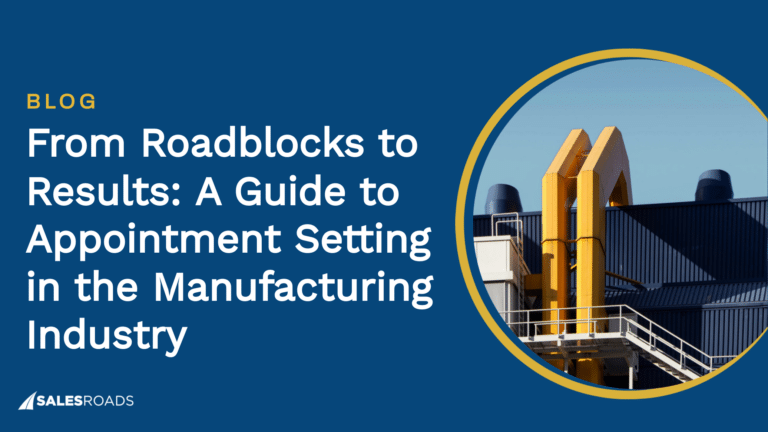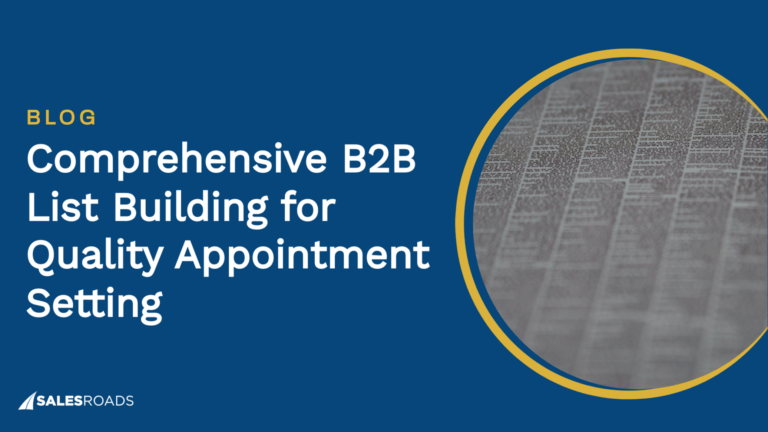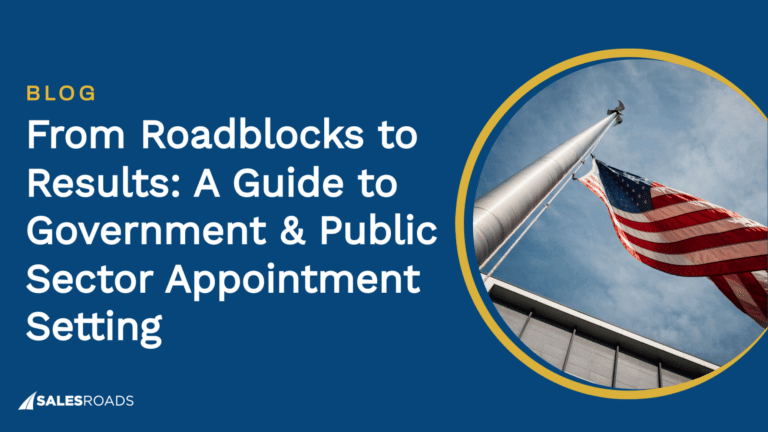In sales and lead generation, appointment setting bridges prospective clients and businesses, drawing both parties closer to a final deal. Booked appointments present valuable opportunities for companies to showcase their products or services and establish fruitful relationships.
As the first interaction with potential customers, this process is vital for growth, so you need to master different tactics for securing appointments to maintain a robust pipeline filled with promising leads.
Streamline Your Appointment Setting Process with a Solid Funnel
A well-designed appointment setting funnel can seamlessly move prospects out of the awareness stage, stimulate interest, and guide them toward a decision. That makes it excellent for attracting leads, consistently fueling the pipeline, and automating your lead generation. These funnels employ inbound techniques to foster connections between prospects and sales development representatives (SDRs) and encourage potential clients to commit to a future meeting.
Here are four essential steps to develop a strong appointment setting funnel:
Step 1: Spark interest with informative content
Develop and narrow your ideal customer profiles and buyer personas to attract the attention of warm prospects. Share valuable content like articles, white papers, and case studies on your website, social media platforms, and any other advertising channels you use.
Step 2: Refine your landing pages
Landing pages are proven tools for generating leads and collecting crucial information to schedule meetings. Offer gated content on your landing pages that visitors can access after they provide their email addresses. High-quality content gives visitors more incentive to share their information.
Step 3: Set up email campaigns with booking pages
Organize and segment the leads obtained from your opt-in pages to set up targeted email campaigns and nurture these prospects. Also, implement automation tools to share your schedule booking page for easy appointment setting.
Step 4: Send confirmation and reminders
Once you settle on a meeting time, send the prospect a confirmation email, as well as periodic reminders for the appointment. This practice allows SDRs to prioritize and prepare for upcoming meetings.
If you outsource your appointment setting, learn how your partner manages rescheduled or canceled appointments. David Kreiger expands on this topic in his video:
Build an Effective Appointment Setting Campaign
Appointment setting campaigns are a type of targeted outreach whose goal is to convince leads to meet with a company. They require careful planning and strategic execution to yield fruitful results.
To construct a successful appointment setting campaign, follow these steps:
1. Set clear objectives
The cornerstone of a successful appointment setting program is well-defined goals. You need clear objectives to gauge the success of your campaign accurately; they not only provide a blueprint for your activities but also set concrete expectations, both of which affect team motivation.
Appointment setting goals vary for each business but are often grounded in improving sales pipeline quality, increasing revenue, and enhancing sales funnel efficiency.
When establishing your objectives, you should adopt the SMART (Specific, Measurable, Achievable, Relevant, Time-bound) framework, as it ensures your plans are explicit, align with your business objectives, and follow a designated time frame.
Be flexible with your appointment setting targets and adjust them as needed. Break down large-scale goals into smaller, manageable milestones and anticipate potential obstacles to your success. With careful planning and clear objectives, your appointment setting program will have the foundation it needs to secure meetings with leads and move them closer to a final sale.
2. Identify targets
Use your ideal customer profiles to hone in on the prospective clients most likely to convert for maximum outreach and minimal resource waste.
3. Assign a team
Responsibility for the appointment setting campaign should fall on a designated team. While a group of well-trained SDRs within your company can handle it, employing professionals from specialized appointment setting services often yields more impressive results. They bring industry-specific expertise and experience to the table, giving your internal team more time to close deals.
4. Create a messaging strategy
Your SDRs need to conduct thorough research to uncover the specific challenges prospects face in your market, then leverage those insights to craft personalized value propositions. Cultivate a deep understanding of your company’s competitive positioning to highlight its unique benefits to your target audience.
5. Engage prospects on multiple channels
For the broadest outreach, collect your prospects’ contact details across various channels and communicate with them through these mediums. Personalize your communications by including the lead’s name and any other relevant information to increase the chances of gaining a response or interaction from them.
6. Follow up after outreach
Keep in mind that, on average, prospects require eight points of contact to convert. Therefore, your team should devise an effective follow-up strategy to handle objections, provide additional information, and offer other incentives to convince leads to schedule an appointment.
7. Measure results
With well-defined goals established at the onset, it’s relatively straightforward to assess the impact of your appointment setting campaign. Compile key reports — including daily updates, outreach reports, and analyses of wins and losses — for accurate tracking.
8. Reiterate and adapt
Data collected from the frontlines helps sales teams rectify flaws in their execution and improve their approach. Continuously gather and incorporate data to maintain top-notch outreach.
Personalize Appointment Setting Conversations with Scripts
Appointment setting scripts equip SDRs to overcome nervousness or unpreparedness when engaging potential clients. They provide a roadmap for conversations and messaging strategies to produce optimal outreach results.
Sales teams can develop scripts based on common appointment setting scenarios, which opens opportunities to customize conversations for each client according to their specific challenges. As a result, they help SDRs appear more confident, minimize call termination, and effectively showcase brand identity.
Every script comprises four main components: an opening statement, a qualification statement, an appointment statement, and a closing statement.
The opening statement allows the SDR to introduce themselves, build rapport, and make a positive first impression. Qualification statements delve into pain points, identify the decision-maker, and assess the prospect’s suitability for your product or service. The appointment statement is the essence of the call and presents its call to action: scheduling an appointment. Lastly, the closing statement concludes the conversation and reminds the prospect of the upcoming meeting, if set.
Sample appointment setting scripts can provide invaluable guidance for your own script creation.
Boost appointment setting conversion rates with emails
Email campaigns can yield significantly stronger appointment setting results when part of a multifaceted approach to attract leads. However, your emails must be distinct and engaging to stand out amid the numerous messages competing for your prospects’ attention.
An effective appointment setting email includes powerful subject lines, succinct introductions, customized value propositions, and a scheduling link for the meeting. To maximize the impact of your communications, develop a variety of templates and personalize each message to align with the client’s specific needs, as identified through your research. Keep emails concise and always verify the prospect’s details to avoid returned messages — and wasted effort.
Take Your appointment Setting to Another Level with LinkedIn
Social media is an indispensable tool for lead generation and business appointment scheduling. Among the various platforms, LinkedIn’s professional environment excels at attracting quality prospects and boosting revenue.
With their community of over 930 million users and robust advertising features, LinkedIn enables precise demographic targeting to secure highly qualified appointments. Businesses can generate appointments on the platform by following these tips:
Optimize your LinkedIn profile
Ensure your profile is complete and detailed so it appears professional and trustworthy to prospects. Expand your network by following industry leaders.
Generate interest
LinkedIn is an ideal avenue for drawing in customers appropriate for your offering because you can share high-quality content, post thought-provoking ideas, and engage with other users through comments.
Create a follow-up plan
This reminds prospects of your upcoming meeting, which reduces the number of forgotten appointments. It also allows you to reschedule missed ones.
Avoid being too salesy
Sending overly sales-focused messages on LinkedIn can quickly drive away prospects. Instead, prioritize building rapport and establishing relationships before requesting an appointment. This process may take time though, so be patient and persistent.
Use scheduling tools
These tools allow prospects to choose convenient meeting times in a structured, well-organized manner. Consider options like Calendly, Google Meet, Appointlet, and HubSpot’s meeting tool to streamline the process with easy scheduling links.
The Big Leagues: C-level Appointment Setting
In B2B sales, C-suite executives are the top decision-makers. However, their involvement in the sales process can prolong the cycle. To limit that slowdown, develop C-level appointment setting procedures that enable your SDRs to interact directly with upper management.
C-suite executives include the chief executive officer (CEO), chief operating officer (COO), chief marketing officer (CMO), chief financial officer (CFO), chief information officer (CIO), and chief technology officer (CTO). Interacting with these individuals requires specific communication techniques and an understanding of their unique roles, needs, and expectations.
Common challenges of setting appointments with C-level executives include:
- Intense competition: This group is highly sought after, with competitors also vying for their attention. To outperform them SDRs need to conduct thorough research on the executive and clearly communicate the value of your offerings.
- Gatekeepers: Many executives have assistants who manage access to them, making it challenging for SDRs and salespeople to reach the intended decision-maker. Appointment setters must learn strategies for dealing with gatekeepers during outreach to get past them (scripts can be especially helpful in navigating these situations).
- Demand for evidence: Due to their extensive industry knowledge and experience, C-suite executives require reliable, evidence-backed information about products and services before committing to a future engagement. Pre-call preparation should include research on pain points, company background, and potential concerns. The better prepared your SDRs are, the less likely the executives will be to dismiss them.
- Time scarcity: Executives are often pressed for time, so SDRs should avoid distractions on the call and aim to schedule appointments quickly. Ask the right questions to gather necessary information, highlight the advantages of your product or service, eliminate any hesitation, and proceed to booking the meeting.
Surpassing these challenges helps build a robust sales pipeline and drive business growth.
Overcoming Appointment Setting Objections
Every sales process, including appointment setting, inevitably encounters objections. Resolving them is a skill that salespeople and teams need to cultivate to ensure a steady flow of leads.
Common obstacles in appointment setting include a lack of interest, limited budget, inquiries about pricing, existing client relationships, and requests for additional information. The key to handling appointment setting objections lies in equipping your team with rebuttals for these and other scenarios. This proactive approach anticipates and manages roadblocks, resulting in more meetings and better lead generation.
For instance, you can engage a disinterested prospect by presenting compelling benefits at the start of the conversation. Or, if a lead claims to have no budget, sales reps should focus on the long-term value that the product or service brings. When faced with prospects who want to discuss pricing, the focus should be on setting an appointment rather than digressing to talk about cost.
If they already have a provider, it’s essential to emphasize the unique value of your product or service and provide statistics demonstrating your company’s successful track record. Lastly, if a lead asks for more information, sales reps should reassure that they’ll cover all relevant points of interest in the scheduled meeting.
Appointment Setting Training
Sales managers are best positioned to develop key appointment setting skills and identify areas for improvement in their SDRs. At minimum, an adept appointment setter must possess effective time management, lead qualification, active listening, and objection handling skills.
To develop these and other critical abilities, the focal points of any appointment setting training you provide should include:
- Research: Show SDRs the best ways to gather data and what kind of information is most valuable for appointment setting campaigns.
- Questioning and rapport building: Insightful questioning can reveal crucial client information and foster quality conversations.
- Scheduling software: Train SDRs to use scheduling software and other appointment setting automation tools.
- Follow-up: Teach systematic techniques for communicating with prospects after initial outreach, as well as with no-shows, to maintain their interest.
Bottom Line
Appointment setting is much more than simply arranging meetings; it’s a strategy designed to nurture valuable relationships with targeted prospects. This guide has covered a range of appointment setting tactics, from crafting effective scripts and leveraging LinkedIn to email marketing and skills training. Along with these, it’s important to optimize your sales funnel and design compelling campaigns to achieve success.
Whether you’re an SDR or a sales manager, these strategies are powerful assets you can incorporate into your own practices. The ultimate goal is to convert qualified leads into clients, and securing appointments will help you get there. Experiment with what you’ve learned and watch your conversion rates soar.









